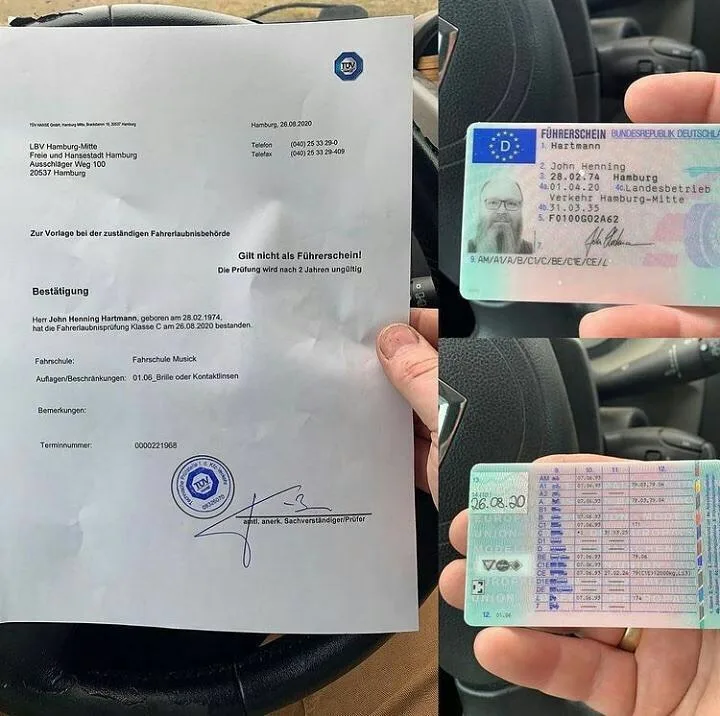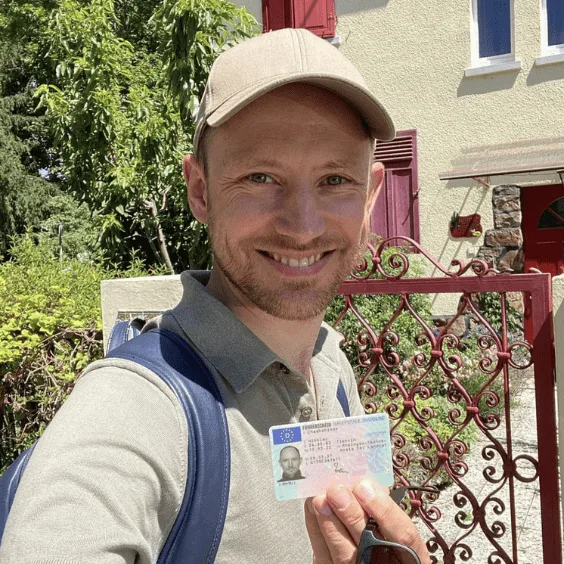15 Reasons Not To Ignore Learn To Drive Without A Test
페이지 정보
작성자 Tressa 댓글 0건 조회 2회 작성일 25-04-27 03:08본문
Discovering to Drive Without a Test: Exploring Alternative Courses in Driver Education
 In an age where benefit and development dominate the landscape of education and skills acquisition, the traditional design of learning to drive-- finishing an extensive test to make a driver's license-- has come under scrutiny. For many, the procedure of supporting the wheel, studying hard, and passing both a composed and useful driving test can be intimidating. Nevertheless, emerging trends and alternative approaches to driver education suggest that there may be ways to find out to drive without feeling the pressure of a formal testing environment.
In an age where benefit and development dominate the landscape of education and skills acquisition, the traditional design of learning to drive-- finishing an extensive test to make a driver's license-- has come under scrutiny. For many, the procedure of supporting the wheel, studying hard, and passing both a composed and useful driving test can be intimidating. Nevertheless, emerging trends and alternative approaches to driver education suggest that there may be ways to find out to drive without feeling the pressure of a formal testing environment.
Comprehending the Traditional Model
Typically, earning a driver's license needs prospective drivers to go through a series of tests developed to gauge understanding and useful abilities. These include:
Written Test: This examines understanding of the guidelines of the roadway, traffic signals, and safe driving practices.
Practical Driving Test: Applicants need to show their ability to operate an automobile safely and in accordance with traffic laws.
While this model ensures that all drivers fulfill a minimum standard of skills, it can be a source of stress for many learners. The worry of failure, combined with the logistics and cost associated with testing, can deter people from getting their license altogether.
Alternative Methods of Learning to Drive
Driving School Innovations: Many driving schools have started to offer more tailored education programs that permit trainees to learn at their own pace. These programs often consist of individually instruction with licensed driving trainers who concentrate on structure confidence instead of pushing trainees to pass a test. Some modern-day driving schools even incorporate online modules where students can study the rules of the road in a more unwinded setting before stepping into the car.
Simulated Driving Experiences: Advances in technology have actually resulted in the development of advanced driving simulators. These can supply valuable experience without the threat of accidents. Learners can practice their abilities in various weather condition conditions, traffic circumstances, and driving scenarios that they may not encounter in common driving classes. This hands-on method to knowing can boost a student's competence and self-confidence behind the wheel.
 Peer-to-Peer Learning: Informal driving practice with buddies or member of the family can likewise act as a feasible alternative to conventional methods. While this method does not totally get rid of the need for formal testing, it enables people to get comfort and experience behind the wheel without the anxiety of a main assessment. Household or good friends can provide guidance and feedback, fahrerlaubnis schnell deutschland führerschein kaufen (upchurch-gilliam-4.technetbloggers.de) making the learning process less intimidating and more encouraging.
Peer-to-Peer Learning: Informal driving practice with buddies or member of the family can likewise act as a feasible alternative to conventional methods. While this method does not totally get rid of the need for formal testing, it enables people to get comfort and experience behind the wheel without the anxiety of a main assessment. Household or good friends can provide guidance and feedback, fahrerlaubnis schnell deutschland führerschein kaufen (upchurch-gilliam-4.technetbloggers.de) making the learning process less intimidating and more encouraging.
Versatile State Regulations: Some regions are starting to reassess their compulsory testing policies, particularly for certain demographics, such as veterans or people with specials needs. These changes reflect a growing acknowledgment that life experiences and driving habits might not constantly align with conventional testing standards. Advocacy for b197 führerschein preis a more holistic method to evaluating driving proficiency is becoming a topic of conversation in many legal circles.
Private Certifications: fahrerlaubnis Ohne Prüfung In specific areas, individuals may explore options that focus more on mentorship and more secure driving habits instead of standard tests. Accreditation through neighborhood programs or recognized companies that back experiential knowing might motivate safe driving while bypassing the basic testing route.
The Benefits and Drawbacks
While finding out to drive without an official test uses lots of potential advantages-- such as decreasing stress, promoting a more inclusive environment for B197 Fuhrerschein Kaufen learners, and concentrating on competence over testing anxiety-- it likewise raises concerns. Critics argue that eliminating official evaluations could cause disparities in driver readiness, potentially jeopardizing road security.
Moreover, traditional testing serves not only as an evaluation of abilities, but as a standardized benchmark that guarantees all drivers possess the required understanding to navigate the roadways safely.
Conclusion
The landscape of driver education is evolving. As alternative methods of finding out to drive gain traction, striking a balance between flexibility and security is paramount. While it is clear that there are avenues for discovering to drive without the pressure of a formal test, making sure that all chauffeurs maintain a high requirement of security should stay a top priority. In the future, we may see more tailored techniques to driver education that accommodate different learning styles, ultimately leading to safer, more positive motorists on our roads.
 In an age where benefit and development dominate the landscape of education and skills acquisition, the traditional design of learning to drive-- finishing an extensive test to make a driver's license-- has come under scrutiny. For many, the procedure of supporting the wheel, studying hard, and passing both a composed and useful driving test can be intimidating. Nevertheless, emerging trends and alternative approaches to driver education suggest that there may be ways to find out to drive without feeling the pressure of a formal testing environment.
In an age where benefit and development dominate the landscape of education and skills acquisition, the traditional design of learning to drive-- finishing an extensive test to make a driver's license-- has come under scrutiny. For many, the procedure of supporting the wheel, studying hard, and passing both a composed and useful driving test can be intimidating. Nevertheless, emerging trends and alternative approaches to driver education suggest that there may be ways to find out to drive without feeling the pressure of a formal testing environment.Comprehending the Traditional Model
Typically, earning a driver's license needs prospective drivers to go through a series of tests developed to gauge understanding and useful abilities. These include:
Written Test: This examines understanding of the guidelines of the roadway, traffic signals, and safe driving practices.
Practical Driving Test: Applicants need to show their ability to operate an automobile safely and in accordance with traffic laws.
While this model ensures that all drivers fulfill a minimum standard of skills, it can be a source of stress for many learners. The worry of failure, combined with the logistics and cost associated with testing, can deter people from getting their license altogether.
Alternative Methods of Learning to Drive
Driving School Innovations: Many driving schools have started to offer more tailored education programs that permit trainees to learn at their own pace. These programs often consist of individually instruction with licensed driving trainers who concentrate on structure confidence instead of pushing trainees to pass a test. Some modern-day driving schools even incorporate online modules where students can study the rules of the road in a more unwinded setting before stepping into the car.
Simulated Driving Experiences: Advances in technology have actually resulted in the development of advanced driving simulators. These can supply valuable experience without the threat of accidents. Learners can practice their abilities in various weather condition conditions, traffic circumstances, and driving scenarios that they may not encounter in common driving classes. This hands-on method to knowing can boost a student's competence and self-confidence behind the wheel.
 Peer-to-Peer Learning: Informal driving practice with buddies or member of the family can likewise act as a feasible alternative to conventional methods. While this method does not totally get rid of the need for formal testing, it enables people to get comfort and experience behind the wheel without the anxiety of a main assessment. Household or good friends can provide guidance and feedback, fahrerlaubnis schnell deutschland führerschein kaufen (upchurch-gilliam-4.technetbloggers.de) making the learning process less intimidating and more encouraging.
Peer-to-Peer Learning: Informal driving practice with buddies or member of the family can likewise act as a feasible alternative to conventional methods. While this method does not totally get rid of the need for formal testing, it enables people to get comfort and experience behind the wheel without the anxiety of a main assessment. Household or good friends can provide guidance and feedback, fahrerlaubnis schnell deutschland führerschein kaufen (upchurch-gilliam-4.technetbloggers.de) making the learning process less intimidating and more encouraging.Versatile State Regulations: Some regions are starting to reassess their compulsory testing policies, particularly for certain demographics, such as veterans or people with specials needs. These changes reflect a growing acknowledgment that life experiences and driving habits might not constantly align with conventional testing standards. Advocacy for b197 führerschein preis a more holistic method to evaluating driving proficiency is becoming a topic of conversation in many legal circles.
Private Certifications: fahrerlaubnis Ohne Prüfung In specific areas, individuals may explore options that focus more on mentorship and more secure driving habits instead of standard tests. Accreditation through neighborhood programs or recognized companies that back experiential knowing might motivate safe driving while bypassing the basic testing route.
The Benefits and Drawbacks
While finding out to drive without an official test uses lots of potential advantages-- such as decreasing stress, promoting a more inclusive environment for B197 Fuhrerschein Kaufen learners, and concentrating on competence over testing anxiety-- it likewise raises concerns. Critics argue that eliminating official evaluations could cause disparities in driver readiness, potentially jeopardizing road security.
Moreover, traditional testing serves not only as an evaluation of abilities, but as a standardized benchmark that guarantees all drivers possess the required understanding to navigate the roadways safely.
Conclusion
The landscape of driver education is evolving. As alternative methods of finding out to drive gain traction, striking a balance between flexibility and security is paramount. While it is clear that there are avenues for discovering to drive without the pressure of a formal test, making sure that all chauffeurs maintain a high requirement of security should stay a top priority. In the future, we may see more tailored techniques to driver education that accommodate different learning styles, ultimately leading to safer, more positive motorists on our roads.
댓글목록
등록된 댓글이 없습니다.